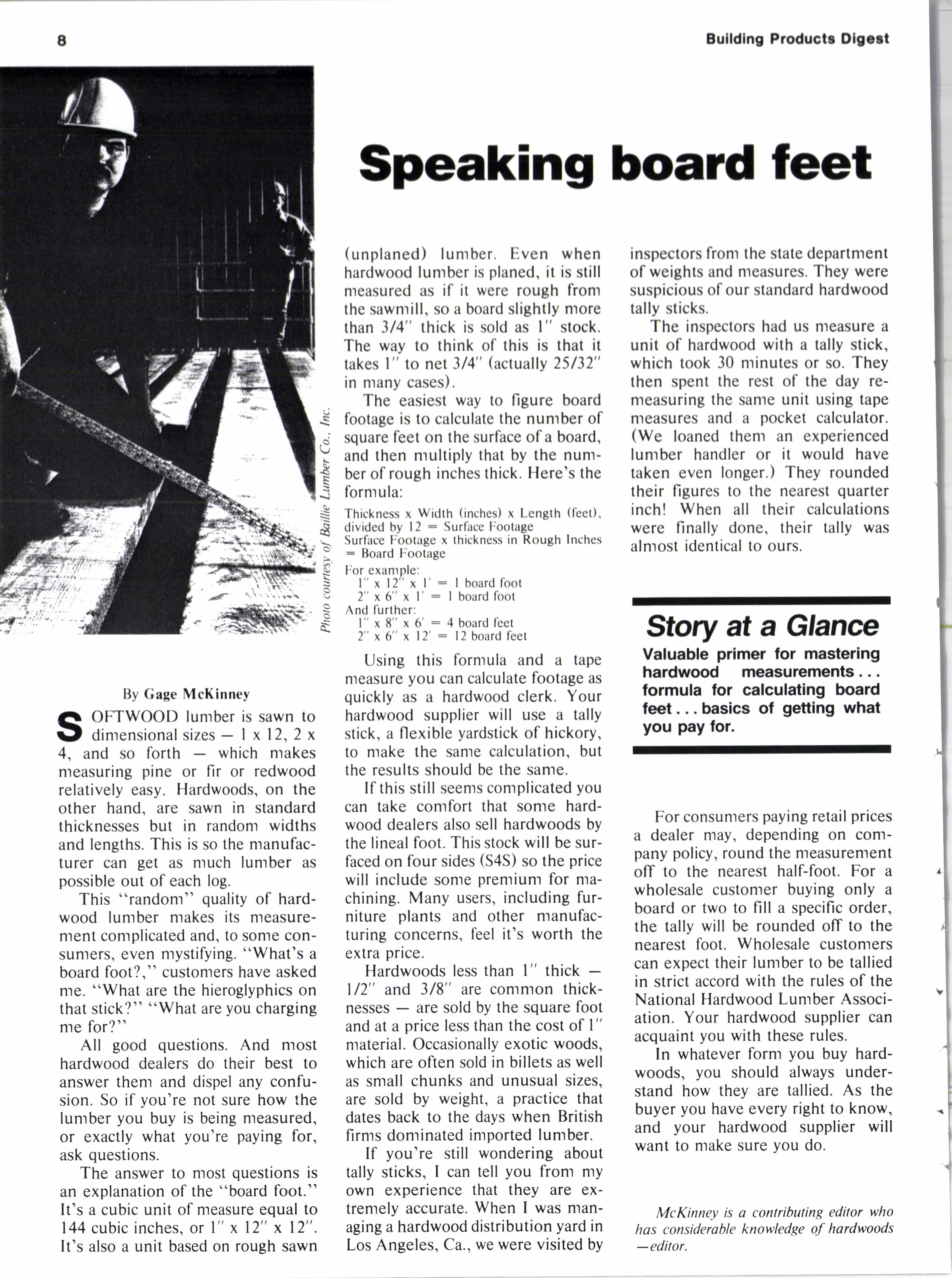
2 minute read
Speaking board feet
(unplaned) lunrber. Even when hardwood luntber is planed, it is still nreasured as if it were rough fronr the sawnrill, so a board slightly more than 3/4" thick is sold as l" stock. The way to think ol this is that it takes l" to net 3/4" (actually 25/32" in nrany cases).
The easiest way to figure board footage is to calculate the nunrber of square feet on the surface ofa board, and then nrultiply that by the nuntber of rough inches thick. Here's the fornrula:
Thickness x Width (inches) x Length (feet), divided by l2 : Surlace Footage
Surface Footage x thickness in Rough Inches
: lloard Footage l'or exanrple: l"x12"xl':Iboardfoot
2" x6" x l' : I board foot And further: l"x8"x6':4boardfeet
2" x 6" x l2' : 12 board feet
Using this forntula and a tape nreasure you can calculate footage as quickly as a hardwood clerk. Your hardwood supplier will use a tally stick, a flexible yardstick of hickory, to nrake the sanre calculation, but the results should be the sanre.
Ifthis still seenrs conrplicated you can take conrfort that sonre hardwood dealers also sell hardwoods by the lineal foot. This stock will be surfaced on four sides (S4S) so the price will include sonre premiunr for nrachining. Many users, including furniture plants and other nranufacturing concerns, feel it's worth the extra price.
Hardwoods less than l " thickl/2" and 3/8" are conrnron thicknessesare sold by the square foot and at a price less than the cost of l" nraterial. Occasionally exotic woods, which are often sold in billets as well as snrall chunks and unusual sizes, are sold by weight, a practice that dates back to the days when British fi rnrs donrinated intported lunrber.
If you're still wondering about tally sticks, I can tell you from nty own experience that they are extremely accurate. When I was ntanaging a hardwood distribution yard in Los Angeles, Ca., we were visited by inspectors fronr the state department of weights and nteasures. They were suspicious of our standard hardwood tally sticks.
The inspectors had us nreasure a unit of hardwood with a tally stick, which took 30 nrinutes or so. They then spent the rest of the day renreasuring the sanre unit using tape nleasures and a pocket calculator. (We loaned thenr an experienced lunrber handler or it would have taken even longer.) They rounded their figures to the nearest quarter inch! When all their calculations were finally done, their tally was alnrost identical to ours.
Story at a Glane
Valuable primer for mastering hardwood measurements. formula for calculating board feet. basics of getting what you pay for.
For consunrers paying retail prices a dealer ntay, depending on contpany policy, round the nteasurentent off to the nearest half-foot. For a wholesale customer buying only a board or two to fill a specific order, the tally will be rounded off to the nearest foot. Wholesale custonters can expect their luntber to be tallied in strict accord with the rules of the National Hardwood Lunrber Association. Your hardwood supplier can acquaint you with these rules.
In whatever fornr you buy hardwoods, you should always understand how they are tallied. As the buyer you have every right to know, and your hardwood supplier will want to nrake sure you do.










